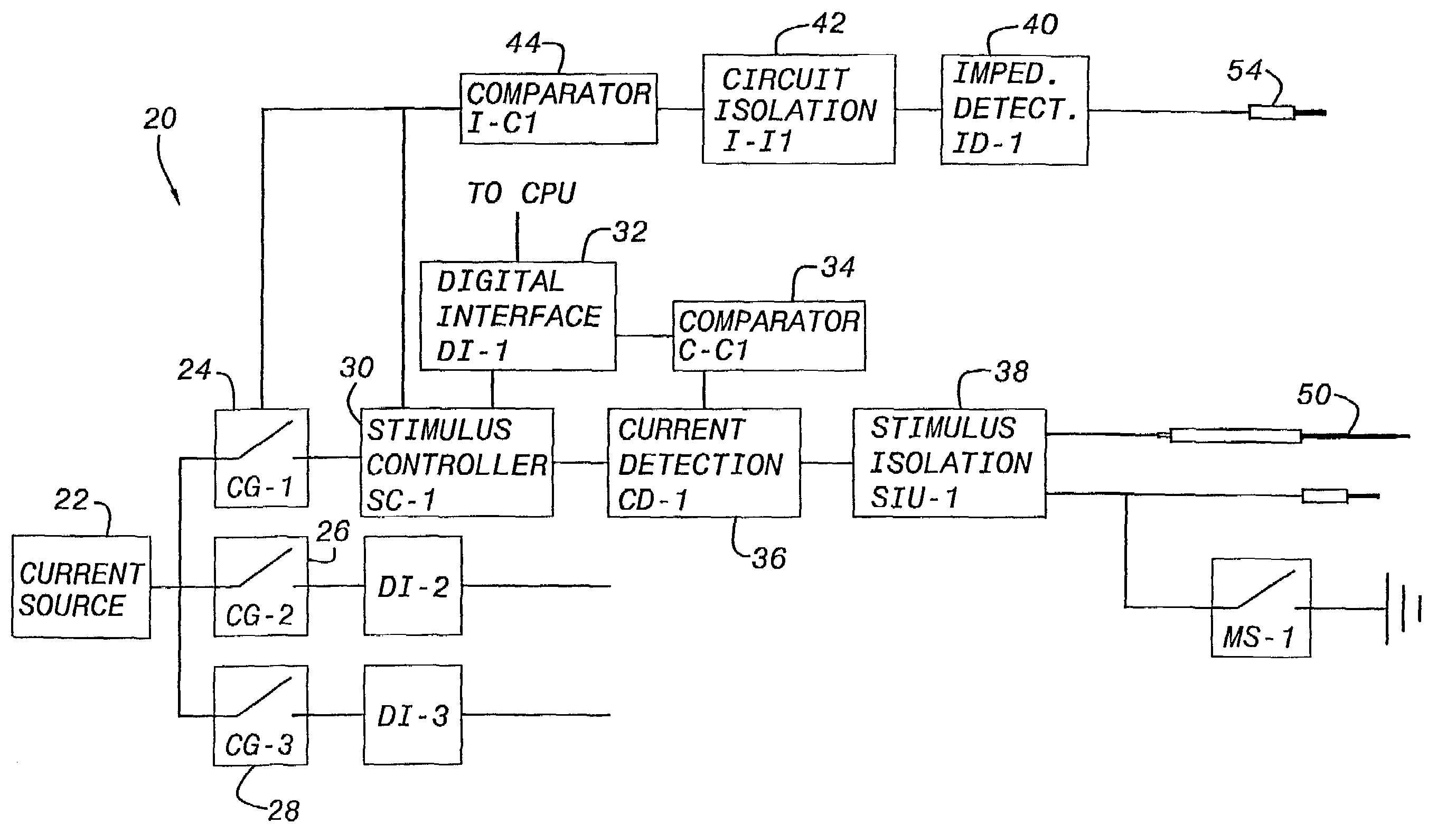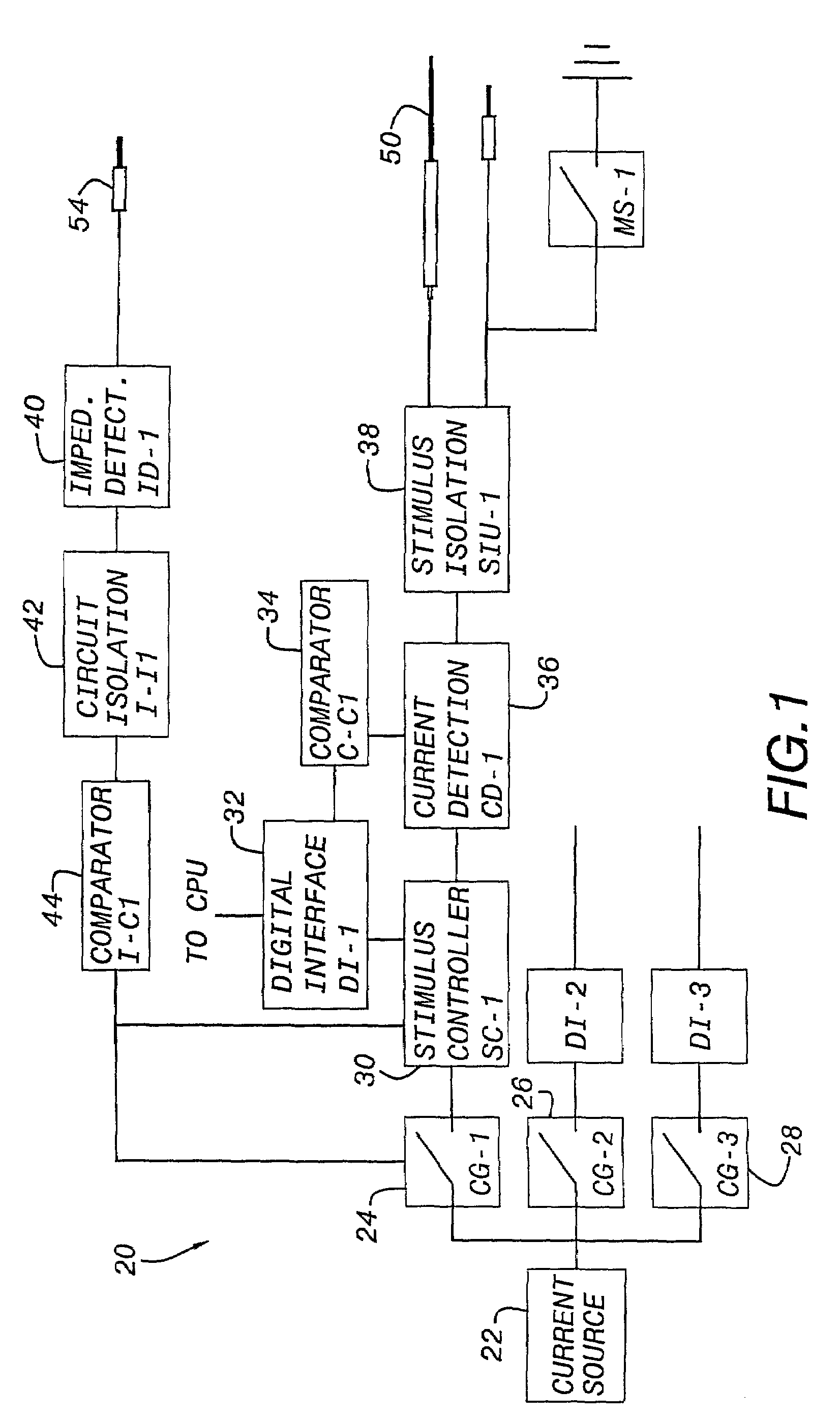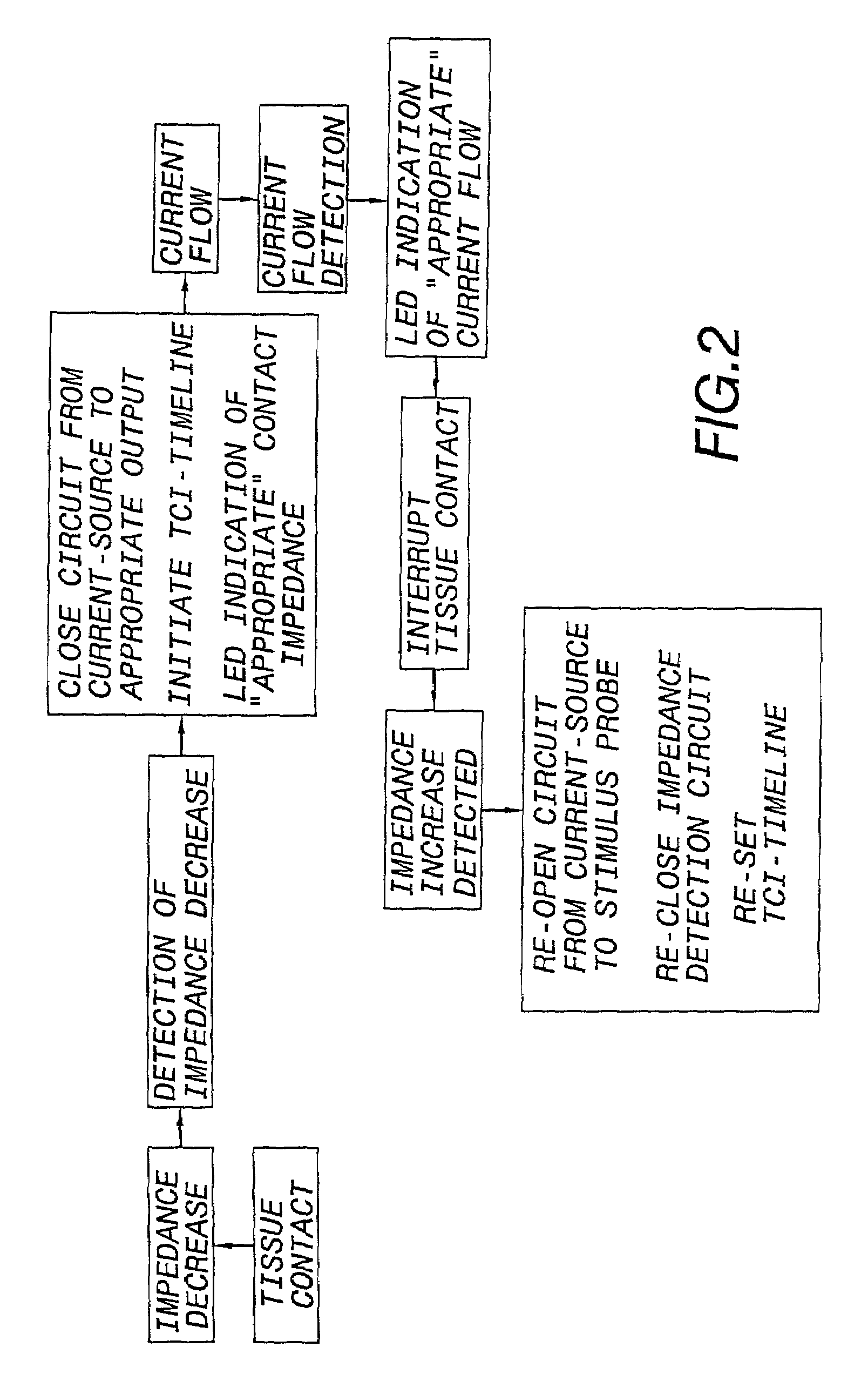Nerves are very delicate and even the best and most experienced surgeons, using the most sophisticated equipment known, encounter a considerable
hazard that a nerve will be bruised, stretched or severed during an operation.
Prior art nerve integrity monitoring instruments (such as the Xomed® NIM-2® XL Nerve Integrity Monitor, manufactured by the assignee of the present invention) have proven to be effective for performing the basic functions associated with nerve integrity monitoring such as recording EMG activity from muscles innervated by an affected nerve and alerting a surgeon when the affected nerve is activated by application of a stimulus
signal, but have significant limitations for some surgical applications and in some operating room environments.
A first problem is users have noticed certain EMG measurement artifacts have a disruptive effect on monitoring and tend to cause undesirable false alarms.
In particular, EMG monitoring often is performed during electrocautery in a surgical procedure, wherein powerful currents surge through and cauterize the tissue, often to devastating effect on the monitor's sensitive
amplifier circuits.
These brief artifacts may be confused for true electromyographic (
muscle) responses and may lead to misinterpretation and false alarms, thereby reducing
user confidence and satisfaction in nerve integrity monitoring.
Maintenance of high common-mode rejection characteristics in the
signal conditioning path has helped to reduce such interference, however, false alarms still occur.
Prior art nerve integrity monitoring devices incorporate a simple threshold detection method to identify significant electrical events based upon the amplitude of the
signal voltage observed in the monitoring electrodes, relative to a baseline of electrical
silence, a methodology having disadvantages for intraoperative nerve integrity monitoring.
Moreover, with close
electrode spacing and bipolar amplification, recording of larger responses is frequently associated with internal
signal cancellation, significantly reducing the amplitude of the observed electrical signal.
Another
disadvantage of prior art methodology of threshold detection is that the surgeon cannot readily distinguish or select between electrical artifacts and EMG activity.
A second problem is that the nerves of interest may frequently exhibit a variable amount of
irritability during the surgical procedure, which may be caused by a
disease process or by surgical manipulations such as mild traction or by
drying or thermal effects.
Once a reasonable effort to reduce nerve
irritability has been carried out, any residual nerve
irritability becomes “
noise” and may interfere with the ability to detect electrically and mechanically stimulated
nerve activity.
A third problem arises when monopolar probes, bipolar probes or electrified instruments are selected for electrical stimulation during intraoperative neurophysiological monitoring.
If there are two outputs, the outputs are connected in parallel with a single common stimulus intensity setting and so there is no ability to provide separate (optimized) stimulus intensities or to guard against
parallel communication between the two outputs.
If both outputs are connected to stimulus instruments, undetected current-leak could occur through parallel channels and result in false-negative stimulation.
At least one manufacturer or prior art monitoring instruments offers a switchable connector at the stimulus probe terminus, allowing more than one stimulus instrument to be kept in readiness, and avoiding parallel connections to the unused instruments, but performing the act of switching requires a surgical staff member such as a nurse or
technician and so is cumbersome and, being
time consuming, expensive.
A related problem is that prolonged nerve irritability may be due to light
anesthesia, rather than to inherent nerve irritability.
Another problem confronting users of prior art nerve integrity monitoring devices is that quantative measurements of
nerve function are relatively cumbersome to obtain, since equipment setting changes must be performed by operating room personnel while electrical stimulation procedures are performed by the operating surgeon.
With prior art technology, this process is time-intensive and discourages serial determinations during the operation as an ongoing measure of nerve integrity.
When using prior art methods, if the threshold is found to be abnormal, the surgeon is usually unaware of when the change to
abnormality occurred during the operative procedure.
For multi-channel nerve integrity monitoring with qualitative and quantitative signal analysis, front and back panel hardware is cumbersome and too limited in scope.
A limitation of prior art strategies is that the setup information is held in
volatile memory during actual monitoring operations, rendering the setup information vulnerable to strong electrical surges,
electromagnetic noise or accidental power interruptions.
An electrical surge or accidental unplugging may cause loss of all new (different from “default”) setup information, requiring a “
reboot” of the system and adjustment to get back to the desired settings.
Stimulation devices of the prior art for neurophysiological monitoring are manually controlled through
front panel potentiometers and switches or with mouse and keyboard to produce paired or burst stimuli and stimuli of opposite polarity in an alternating pattern, but lack the ability to deliver consecutive stimuli of differing intensities or alter the pattern of stimulation at a predetermined time without that
time consuming manual input.
Analogously, none of the monitoring instruments of the prior art provide delivery of selected stimuli in coordination with
data acquisition, analysis, display, and storage.
Moreover, in prior art nerve integrity devices, control of on-line functions is performed by keyboard and mouse or by
front panel controls and, because of a possible breach of
sterility, the operating surgeon cannot perform such functions by himself or herself and so
changing equipment settings requires involvement of hospital personnel at the request of the operating surgeon and may be time-consuming, cumbersome and possibly risky, since the changed settings may be inaccurate.
Once a reasonable attempt has been made to allow the nerve to become quieted, any remaining repetitive activity is essentially “
noise” and may interfere with hearing more important brief EMG responses that allow localization of the nerve of interest.
The majority of prior art nerve integrity monitoring devices have only two channels, which allows little redundancy and flexibility.
When repetitive activity becomes bothersome and persistent, despite reasonable efforts on the part of the operating surgeon to allow the nerve to quiet down, the surgeon may ask an operating room employee to “turn the monitor down.” This solution is problematic, because it may cause the surgeon to miss hearing important localizing EMG information.
However, even with visual displays, the process may still be
time consuming and, therefore, expensive.
Moreover, once certain “offending” channels have been muted, there may be long periods before the surgeon, the nurse, or operating room
technician remember or “feel safe” to add these channels back to the
audio signal.
 Login to View More
Login to View More  Login to View More
Login to View More 


